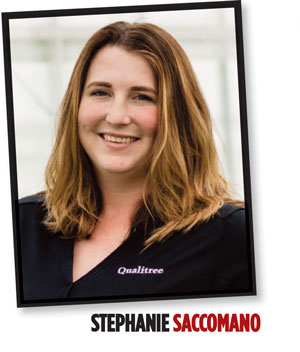1/1/2024
Inspect What You Expect
Stephanie Saccomano

Let’s set the scene.
It’s 3:00 a.m. one December morning in the Pacific Northwest and you’ve gotten an alarm call for low temperatures in a greenhouse. Luckily, you can remote into the computer for the environment controls system and check out what could be causing the issue as you’re putting on your woolies. The thing is, from the screen, everything seems to be working. Vents are closed, heaters are chugging along. But it’s getting closer to freezing in there and you don’t trust that temperatures are going to bounce back up. Maybe you’ve got to get the back-up heaters going, just in case. Woolies on, then the jacket, next the ridiculous fuzzy hat. Maybe some slide-on sandals over your socks (I won’t tell if you won’t).
You venture out to the greenhouse. It’s drizzling. It doesn’t feel that cold in those first few moments outdoors. As you approach, it becomes obvious what the problem is: the vents are stuck wide open. Now as you’re scratching your head a moment, you realize it’s uncomfortably chilly. There are several reasons why this could have happened and all could be fixed.
Eventually it’s all ironed out and the crop can be tucked back into bed before you do the same. “But … my computer told me they were closed!”
Aren’t you glad you checked? Turns out it was a fuse that called it quits.
As we explore and embrace the technologies rapidly becoming available to us, it’s obvious why they’re appealing. You can do more work with fewer man-hours. You can control and monitor more space with more precision than if you were relying on walking around with a handheld sensor and manually cranking vents. But our climate-controlled vents are only as good as the sensors delivering them data and the mechanical parts moving them along. Our sensors are only accurate if they’re clean and calibrated.
A faulty sensor? Sorry. You thought your humidity was in a healthy range for propagation, but it’s actually drier than a popcorn fart in there. The alarm didn’t trigger because the sensor was askew and the system computed everything was swell.
Your system says your irrigation ran? Sorry. A valve was closed mid-line and not a drop of water made it to your crop since you initiated it a few hours ago. The golden window of opportunity to irrigate is gone, and now you have to shuffle and reprioritize.
You get the point. These tools are wonderful things, but I use the word “tool” very deliberately here. A tool facilitates a job or task, but, ultimately, someone has to use and maintain it. Take some time this year before the growing season explodes; understand where the tools available to you may get wear and tear, and what risks are associated with that. Reach out to suppliers and ask for specifics on maintenance and calibration, and stay on top of it.
And while it’s lovely that we may not necessarily have to rely on walking around with a handheld sensor to control environments … do it anyway and cross-check. Make a habit of checking the accuracy of what your system says it’s reading and doing. Of course, humans are fallible. Of course, programming can be fallible. Of course, equipment is fallible. But, together, you can grow a skookum* crop. Distilling this conversation down to one line: “Inspect what you expect!”
Suddenly, it’s January. Thank you for another year of reading GrowerTalks and the little piece I get to add on occasion. Cheers from Chilliwack—we’re wishing you and yours a successful year ahead.
Keep on growing … and make sure to calibrate yourself sometimes, too! GT
Stephanie Saccomano is Head Grower for Qualitree Propagators in Rosedale, British Columbia, Canada.
*Skookum is a Chinook jargon word that has historical use in the Pacific Northwest. It has a range of meanings, commonly associated with an English translation of “strong” or “monstrous.” The word can also mean “greatest,” “powerful,” “ultimate” or “brave.”